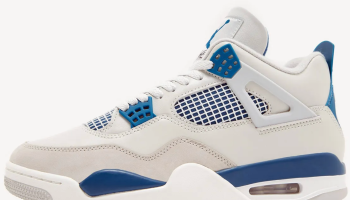Yesterday (July 16), Nike debuted a pair of highly advanced running shoes, the Nike Free Flyknit and the Nike Free Hyperfeel, that are sure to change the game and command inquisitive and admiring stares from passerbys.
Both shoes are inspired by Nike’s “Nature Amplified” design ethos which works by studying the motion of the body and applying scientific measurements and the input of athletes themselves.
The Nike Hyperfeel looks like a pair of socks with a high tech sole, and packs in plenty of bells and whistles.
OUTSOLE
Harking back to Nike co-founder and Oregon Track & Field coach Bill Bowerman, the Nike Free Hyperfeel is structured on a waffle outsole that is reengineered with strategically placed pistons, reflecting key pressure points. Highly durable XDR rubber is added in high-wear heel areas.
CUSHIONING
Articulated Lunarlon foam mirrors the flexible, knife-cut cushioning used in Nike Free footwear, but here it is the only intermediary layer between foot and outsole — minimal layers for maximum sensation. (An optional sockliner is included for a personalized fit.)
FIT AND SUPPORT
Nike Flyknit in the upper provides a compression fit and support where needed without unnecessary structure or weight. Nike Flywire cables lend additional support to help lock the foot down. The upper’s seamless construction significantly reduces the number of shoe components: A typical Air Pegasus running shoe is made up of 57 components. The Nike Free Hyperfeel has just seven. By knitting a one-piece upper, Nike Flyknit construction reduces Nike’s typical upper waste by an average of 90 percent.
The Nike Free Flyknit combines the recently introduced flyknit tech in the snugger fitting upper with plenty of midsole supports.
NIKE FLYKNIT UPPER
A new, more compressive NIke Flyknit construction in the shoe upper secures the runner’s foot to the shoe platform. The unique zoned performance mapping pattern of the Nike Flyknit upper is derived from insights on how pressure is exerted on the top of the foot. Nike Sport Research Lab scientists employed pressure-mapping technology to locate stress areas, and designers used the data to inform the new upper. Zones on the top of the foot have engineered stretch built to enable natural flex, while a tighter weave at the perimeter stabilizes the forefoot and heel. Additionally, elasticized construction fits securely around the ankle for a comfortable, secure fit. By knitting a one-piece upper, Nike Flyknit construction reduces Nike’s typical upper waste by an average of 88 percent.
NIKE FREE PLATFORM
The advanced Nike Flyknit upper sits atop a Nike Free+ 5.0 midsole, which lies in the middle of the Nike Free spectrum, providing mid-range cushioning. (On a scale or 1-10, 1 is akin to running barefoot and 10 is comparable to a traditional running shoe.) The articulated Nike Free sole is flexible and moves naturally with the foot. Diagonal hot-knifed sipes (strategically-engineered flex grooves) through the arch help ensure natural movement in the mid-foot as a runner transitions stride.
Besides featuring the necessities for top flight performance, these kicks look pretty ill, in a good way.
The Nike Free Flyknit will cost you $160 and will be available globally starting August 1. The Nike Free Hyperfeel comes in at $175 and will be available starting September 5.
Will you cop? Let us know in the comments. Check out detailed photos of the shoes in the gallery.
—
Photos: Nike















